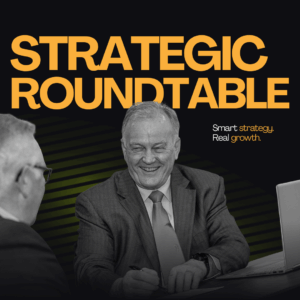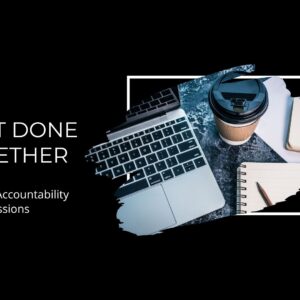Setting goals is an essential part of any business strategy. It gives you a sense of direction, purpose, and something to work toward. But let’s be clear: goals on their own don’t deliver results. Action does.
The real transformation – where ideas become reality – happens in the execution. That’s where planning, measuring, and accountability step in. These are the levers that move you from “this is what I want” to “this is what I’ve achieved”. And for many business owners, this is the exact moment where clarity can either propel you forward or leave you stuck.
Let’s explore how to turn strategy into action in a way that supports sustainable, confident growth.
Planning: Map It Out Like You Mean It
Once a goal is set, planning gives it legs. The key here is to be crystal clear on exactly what needs to happen. Whether your goal is to scale your business, hire new staff, or increase output, the next step is to reverse-engineer the journey.
Start with the outcome. What does success look like?
Then work backwards to break that vision into small, specific, manageable actions. This is where strategy becomes your roadmap.
For example, if your goal is to boost production:
- What equipment will you need?
- Will you need funding?
- Do you need new staff or training?
- How long will it take?
Think of this stage as creating the step-by-step recipe for your business success. It’s not about guessing, it’s about removing uncertainty so every next move feels intentional and aligned with your end goal.
Checklists: The Unsung Heroes of Business Growth
Once you have your plan, turn it into a checklist. This might sound simple, but don’t underestimate its power.
Checklists serve two purposes: they reduce overwhelm and they build momentum. They provide a practical, visual way to track progress and make consistent action achievable, even when you’re busy wearing 15 other hats.
Say you’re planning to increase product output.
Your checklist might include:
- Get quotes for new machinery
- Assess installation costs
- Secure funding
- Schedule delivery and setup
- Prepare workspace
- Manage inventory during downtime
- Recruit additional staff
- Launch a marketing campaign for increased capacity
Each of these is a tangible step. And when attached to a realistic timeline, this list becomes your personal accountability partner. It’s no longer a matter of if you’ll reach your goal, but when.
Measuring: What Gets Measured Gets Managed
Measurement gives your actions context. It tells you if what you’re doing is working and if not, where to adjust.
This is where KPIs (Key Performance Indicators) play a vital role. These aren’t just arbitrary numbers, they’re signposts that help you monitor performance, progress, and profitability.
For example:
- Want to know when to scale production? Set a sales threshold.
- Looking to track the ROI of your new marketing campaign? Measure lead conversion or revenue per client.
The right metrics act as both triggers and reassurance. They show you when it’s time to act, and confirm whether the action you took was the right one.
Most importantly, KPIs keep your decisions grounded in data, not emotion. That’s essential when navigating growth in a way that’s strategic, not reactive.
Accountability: Keep Yourself in the Driver’s Seat
All the planning and measuring in the world means little without accountability. It’s the final piece that ensures momentum continues, even when life gets busy.
Accountability can take many forms:
- Writing down your goals and timelines
- Sharing them with a coach or mentor
- Blocking out weekly time to work on your goals
- Embedding them into your business plan or team discussions
One of the most powerful methods is simply setting aside time every week to work on your most important goals. Even one focused hour, consistently applied, can drive serious progress over time.
And if you’re struggling to stay on track? That’s where I step in. As a business mentor, I work with clients to create accountability structures that work for them. Whether it’s regular check-ins, strategy reviews, or tactical sessions, together we make sure that what matters most never falls by the wayside.
Final Thoughts
Setting a goal is only the beginning. The real growth happens when you:
- Plan with intention
- Track with purpose
- Act with accountability
This bridge between strategy and action is where sustainable success lives. And when you build that bridge with clarity, confidence, and consistency, your business moves from surviving to thriving.
If you’re ready to move beyond the dreaming stage and start executing with direction and purpose, I’m here to help. Let’s turn your strategy into results – one clear step at a time.









